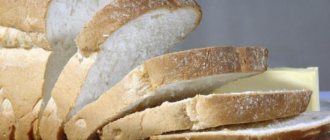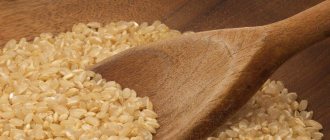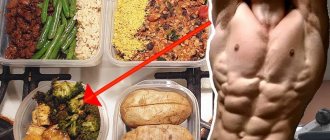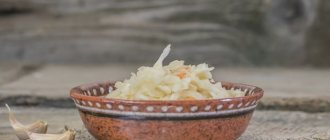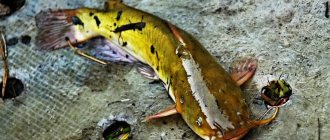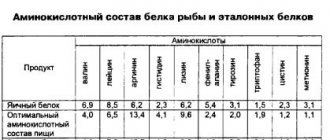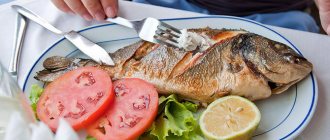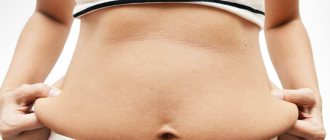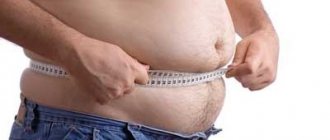Herring is one of the most beloved, popular and affordable seafood in our country. It is difficult to find a person indifferent to this inexpensive but tasty fish. But few people think about the composition, nutritional value of herring, and its beneficial properties.
| Proteins, g | Fats, g | Carbohydrates, g | Calorie content, kcal | |
| Salted herring | 18,35 | 12,35 | 0,13 | 182 |
| Fried herring | 16 | 11-12 | 9-10 | 181-182 |
| Boiled herring | 35 | 23 | 0 | 130 |
Table of composition (proteins, fats, carbohydrates) and calorie content of foods
For reference. Calorie content is the amount of energy received by a person as a result of the absorption of a particular product. The number of calories a person needs depends on the work performed, physical activity, gender, age, latitude (cold or hot climate). Like any fuel, food products, when burned in the body's furnace, release energy. Therefore, food has a certain energy value that can be measured (for example, in kilocalories or joules). Therefore, another name for the energy value of food products is calorie content. Each of us has more than once seen on the factory packaging of store-bought products a number that corresponds to the energy value of 100 g of this product. Anyone can calculate how much energy their body will receive after consuming a certain amount of a product.
Knowing someone's daily diet, that is, the number of foods eaten per day, including drinks, and their energy value, it is easy to calculate the amount of energy received - the calorie content of the daily diet. Biochemists and nutritionists have long calculated the calorie content and composition of almost all food products.
It is simply impossible to provide for all the variety of food. However, taking into account the information on food labels, calculating the calorie content of the daily diet does not present serious difficulties.
https://youtu.be/jtOHdvOenlk
Product characteristics and features
About 60 species of herring fish are known. They are slightly different in appearance and have different tastes. In addition, the taste of fish is influenced by its habitat, time of catching, and method of preparation.
In our country, Atlantic and Pacific herring are mainly sold. The most popular cooking method is light salting. It is less common to purchase smoked and fresh frozen fish. However, nutritionists believe that steamed, boiled or baked herring is much healthier than salted or pickled herring.
Vegetables
| Product | Water, g | Proteins, g | Fats, g | Carbohydrates, g | kcal |
| Eggplant | 91,0 | 0,6 | 0,1 | 5,5 | 24 |
| Swede | 87,5 | 1,2 | 0,1 | 8,1 | 37 |
| Green peas | 80,0 | 5,0 | 0,2 | 13,3 | 72 |
| Zucchini | 93,0 | 0,6 | 0,3 | 5,7 | 27 |
| White cabbage | 90,0 | 1,8 | — | 5,4 | 28 |
| Red cabbage | 90,0 | 1,8 | — | 6,1 | 31 |
| Cauliflower | 90,9 | 2,5 | — | 4,9 | 29 |
| Potato | 76,0 | 2,0 | 0,1 | 19,7 | 83 |
| Green onion (feather) | 92,5 | 1,3 | — | 4,3 | 22 |
| Leek | 87,0 | 3,0 | — | 7,3 | 40 |
| Bulb onions | 86,0 | 1,7 | — | 9,5 | 43 |
| Red carrots | 88,5 | 1,3 | 0,1 | 7,0 | 33 |
| Ground cucumbers | 95,0 | 0,8 | — | 3,0 | 15 |
| Greenhouse cucumbers | 96,5 | 0,7 | — | 1,8 | 10 |
| Sweet green pepper | 92,0 | 1,3 | — | 4,7 | 23 |
| Sweet red pepper | 91,0 | 1,3 | — | 5,7 | 27 |
| Parsley (greens) | 85,0 | 3,7 | — | 8,1 | 45 |
| Parsley (root) | 85,0 | 1,5 | — | 11,0 | 47 |
| Rhubarb (petiole) | 94,5 | 0,7 | — | 2,9 | 16 |
| Radish | 93,0 | 1,2 | — | 4,1 | 20 |
| Radish | 88,6 | 1,9 | — | 7,0 | 34 |
| Turnip | 90,5 | 1,5 | — | 5,9 | 28 |
| Salad | 95,0 | 1,5 | — | 2,2 | 14 |
| Beet | 86,5 | 1,7 | — | 10,8 | 48 |
| Tomatoes (ground) | 93,5 | 0,6 | — | 4,2 | 19 |
| Tomatoes (greenhouse) | 94,6 | 0,6 | — | 2,9 | 14 |
| Green beans (pod) | 90,0 | 4,0 | — | 4,3 | 32 |
| Horseradish | 77,0 | 2,5 | — | 16,3 | 71 |
| Cheremsha | 89,0 | 2,4 | — | 6,5 | 34 |
| Garlic | 70,0 | 6,5 | — | 21,2 | 106 |
| Spinach | 91,2 | 2,9 | — | 2,3 | 21 |
| Sorrel | 90,0 | 1,5 | — | 5,3 | 28 |
Pickling recipes
Herring is an integral product of the holiday table. Most often, housewives use salted fish in the process of preparing dishes. It is used to make herring under a fur coat, salad rolls, vinaigrette, tartar, mincemeat, appetizers, zrazy, and casseroles. In addition, the fish is served simply cut into pieces under aromatic sunflower oil, with onions, often with boiled jacket potatoes.
To avoid these incidents, salt the herring yourself, choosing an acceptable set of spices to suit your own taste.
First of all, you need to buy or catch fresh fish. The tenderness and taste of the finished dish depend on the quality of the herring chosen for pickling. Due to the deteriorating environment, it is recommended to give preference to the Pacific or Atlantic type instead of sea fish, which may contain toxins and heavy metals.
Selection criteria:
- The herring carcass should not be heavily crushed or compressed, and the surface of the skin should be intact, smooth, and without spots.
- The color of good quality fish is silver. The yellowish tint of the scales indicates a violation of storage conditions and “old age” of the herring. This product should not be eaten.
- The fins and gill covers of fresh fish are tightly pressed to the body, the eyes are convex, clear.
Do not buy headless herring, as often unscrupulous sellers thus try to hide low-quality goods, depriving the buyer of the opportunity to determine its freshness. Good fish have gills that are characteristically dark red, without a single light color.
The appearance of blood when pressing on the gills indicates a violation of the salting technology.
- A thick belly indicates that the herring contains caviar or milt.
- Fish should not emit foreign odors other than their own.
To pickle fresh-frozen herring, it must first be thawed. This must be done without loss of beneficial qualities, structure and taste. Don’t rush and speed up the thawing of the fish (put it in hot water, microwave), otherwise you will ruin it. It is correct to defrost herring in the refrigerator at a temperature of 5 degrees during the day.
Before you start preparing the brine, carefully remove the gills from the fish using scissors or a knife. Then rinse the carcass under running cold water. This will remove the bitter taste from the finished product. Fish can be salted whole or pre-gutted. In the first case, it will evenly absorb the required amount of salt and spices over the entire surface and the taste will be correct; in the second, it will cook faster. If caviar or milt is found, they are salted along with the carcass.
The duration of the salting process depends on the size of the fish, individual preferences, and the desire to obtain highly or lightly salted herring. A whole carcass can be kept in a spicy solution in a cold place for up to 7 days.
For quick express salting, in addition to removing the gills, cut off the head, remove the films (internal, external) from the carcass, remove the entrails and intestines, wash under cold water, cut into pieces or profile the meat, and place in the solution. In this version, the herring will be ready in 3 to 5 hours, but the original taste can be modified.
Ingredients:
- water – 1 liter;
- whole herring – 2 pieces;
- sugar – 7.5 grams (1.5 teaspoons);
- salt – 50 grams (4 dessert spoons);
- dried carnation flowers – 5 pieces;
- bay leaf – 4 pieces;
- allspice – 10 peas.
Cooking method
- Boil water in a saucepan, add spices, salt, sugar.
- Cool the brine, pour it over the fish, leave at room temperature for an hour, then put it in the refrigerator for 2 to 7 days.
- Before serving, cut into pieces, garnish with pickled onions and herbs.
Ingredients:
- water – 900 milliliters;
- whole herring – 2 pieces;
- mustard – 30 grams (2 tablespoons);
- sugar – 45 grams (3 tablespoons);
- salt – 75 grams (5 tablespoons);
- chopped herbs (dill or parsley) – 15 grams (1 tablespoon);
- coriander seeds – 15 grams (1 tablespoon);
- bay leaf – 10 pieces;
- black pepper – 15 peas.
Cooking sequence:
- brush the fish with mustard and place in a glass container (enamel or plastic dishes will give the fish a metallic taste);
- boil water in a saucepan, add salt, sugar, spices;
- cool the brine, pour over the carcasses, leave the herring to marinate for 2 hours;
- put in a cool place for three days.
Method for preparing brine:
- Boil a liter of water, slowly add salt to the liquid until it stops dissolving. Visually, you will see that the crystals simply begin to settle to the bottom.
You can check the readiness of the brine using a raw egg: lower it into the water; if it starts to sink, this indicates an insufficient amount of salt in the water, and if it floats on the surface, the brine is ready.
- To improve the taste, add spices to the liquid, based on your own preferences. These can be: black, white, red ground or allspice, clove buds, bay leaves and juniper berries. Cardamom grains, coriander seeds, mustard seeds, vinegar, onions, horseradish, green sour apple, lemon juice, vodka, and soy sauce will not spoil the taste. However, it is not recommended to use iodized salt to prepare brine.
- Place two herring carcasses in a bowl, pour cooled brine over the fish so that it “swims” in the brine. Let it sit for an hour, then put it in the refrigerator for 1 – 2 days.
Dry pickling
Ingredients:
- large whole herring – 1 carcass;
- ground black pepper – 7.5 grams (1.5 teaspoons);
- sugar – 5 grams (1 teaspoon);
- salt – 7.5 grams (1.5 teaspoons).
Recipe:
- Wipe the fish dry with a paper towel or napkins;
- mix black pepper, salt, sugar in a glass container;
- thoroughly rub the fish carcass with the mixture on all sides, including the empty cavity under the gill covers;
- Wrap the herring tightly in three layers of cling film and place in the refrigerator for 2 days.
Cooking method:
- Peel the herring, gut it, cut into pieces;
- provide the fish with salt and spices, leave for half an hour;
- beat the egg, add flour;
- put the frying pan on the fire, add vegetable oil;
- Bread each piece of herring in egg and flour, fry until cooked on both sides;
- Place on a napkin to drain excess fat.
Fried fish is recommended to be served with fresh vegetables.
Remember, when exposed to air, herring fat oxidizes under the influence of oxygen, which leads to the appearance of a rancid taste, unpleasant odor and “rusty” color. Cut fish is stored exclusively in vegetable oil, and whole fish is stored in brine or marinade.
Fruits and berries
| Product | Water, g | Proteins, g | Fats, g | Carbohydrates, g | kcal |
| Apricots | 86,0 | 0,9 | — | 10,5 | 46 |
| Quince | 87,5 | 0,6 | — | 8,9 | 38 |
| Cherry plum | 89,0 | 0,2 | — | 7,4 | 34 |
| A pineapple | 86,0 | 0,4 | — | 11,8 | 48 |
| Bananas | 74,0 | 1,5 | — | 22,4 | 91 |
| Cherry | 85,5 | 0,8 | — | 11,3 | 49 |
| Pomegranate | 85,0 | 0,9 | — | 11,8 | 52 |
| Pear | 87,5 | 0,4 | — | 10,7 | 42 |
| Figs | 83,0 | 0,7 | — | 13,9 | 56 |
| Dogwood | 85,0 | 1,0 | — | 9,7 | 45 |
| Peaches | 86,5 | 0,9 | — | 10,4 | 44 |
| Rowan garden | 81,0 | 1,4 | — | 12,5 | 58 |
| Rowan chokeberry | 80,5 | 1,5 | — | 12,0 | 54 |
| Garden plum | 87,0 | 0,8 | — | 9,9 | 43 |
| Dates | 20,0 | 2,5 | — | 72,1 | 281 |
| Persimmon | 81,5 | 0,5 | — | 15,9 | 62 |
| Cherries | 85,0 | 1,1 | — | 12,3 | 52 |
| Mulberry | 82,7 | 0,7 | — | 12,7 | 53 |
| Apples | 86,5 | 0,4 | — | 11,3 | 46 |
| Orange | 87,5 | 0,9 | — | 8,4 | 38 |
| Grapefruit | 89,0 | 0,9 | — | 7,3 | 35 |
| Lemon | 87,7 | 0,9 | — | 3,6 | 31 |
| Mandarin | 88,5 | 0,8 | — | 8,6 | 38 |
| Cowberry | 87,0 | 0,7 | — | 8,6 | 40 |
| Grape | 80,2 | 0,4 | — | 17,5 | 69 |
| Blueberry | 88,2 | 1,0 | — | 7,7 | 37 |
| Blackberry | 88,0 | 2,0 | — | 5,3 | 33 |
| Strawberries | 84,5 | 1,8 | — | 8,1 | 41 |
| Cranberry | 89,5 | 0,5 | — | 4,8 | 28 |
| Gooseberry | 85,0 | 0,7 | — | 9,9 | 44 |
| Raspberries | 87,0 | 0,8 | — | 9,0 | 41 |
| Cloudberry | 83,3 | 0,8 | — | 6,8 | 31 |
| Sea buckthorn | 75,0 | 0,9 | — | 5,5 | 30 |
| White currant | 86,0 | 0,3 | — | 8,7 | 39 |
| Red currants | 85,4 | 0,6 | — | 8,0 | 38 |
| Black currant | 85,0 | 1,0 | — | 8,0 | 40 |
| Blueberry | 86,5 | 1,1 | — | 8,6 | 40 |
| Fresh rosehip | 66,0 | 1,6 | — | 24,0 | 101 |
| Dried rose hips | 14,0 | 4,0 | — | 60,0 | 253 |
Calorie content
| Number of calories per 100 g of raw product (kcal) | |
| Artichoke | 28 |
| Basil | 27 |
| Eggplant | 24 |
| Sweet potato | 86 |
| Broccoli | 34 |
| Swede | 38 |
| Brussels sprouts | 43 |
| Peas | 81 |
| Oregano | 25 |
| Zucchini | 17 |
| White cabbage | 27 |
| Red cabbage | 31 |
| Potato | 77 |
| Kohlrabi | 27 |
| Watercress | 32 |
| winged beans | 409 |
| lettuce | 15 |
| White onion | 42 |
| Red onion | 42 |
| Bulb onions | 40 |
| Leek | 61 |
| Lovage | 20 |
| Marjoram | 270 |
| Chard | 19 |
| Melissa | 49 |
| Carrot | 41 |
| Mint | 49 |
| Nori (seaweed) | 349 |
| Cucumber | 15 |
| Parsnip | 47 |
| Squash | 18 |
| Chinese cabbage | 12 |
| Yellow pepper | 26 |
| Green pepper | 26 |
| Red pepper | 27 |
| Parsley | 36 |
| Tomato | 18 |
| Rhubarb | 13 |
| Radish | 19 |
| Radish | 16 |
| Turnip | 28 |
| Savoy cabbage | 27 |
| Beet | 40 |
| Celery | 16 |
| Asparagus | 20 |
| Jerusalem artichoke | 73 |
| Pumpkin | 28 |
| Dill | 305 |
| Beans (white) | 102 |
| Fennel | 31 |
| Horseradish | 56 |
| Cauliflower | 25 |
| Savory | 272 |
| Garlic | 149 |
| Spinach | 23 |
| Sorrel | 19 |
| Tarragon | 295 |
| Yam | 118 |
Winged beans are the leader in calorie content. Just like beans, sugar contains about 400 kcal. Herbs, dill, marjoram, savory are amazing. It will be difficult to consume 100 g of savory per meal, but dill and marjoram can reduce your daily calorie intake. So in a summer salad it is better to replace dill with parsley.
The lowest-calorie vegetable is rhubarb, in this it is ahead of the fashionable celery. Sorrel, radish, radish, Chinese cabbage, squash, cucumber, chard, lettuce, and zucchini also do not reach 20 kcal.
Dried fruits
| Product | Water, g | Proteins, g | Fats, g | Carbohydrates, g | kcal |
| Dried apricots | 18,0 | 5,0 | — | 67,5 | 278 |
| Dried apricots | 20,2 | 5,2 | — | 65,9 | 272 |
| Raisins with pit | 19,0 | 1,8 | — | 70,9 | 276 |
| Raisins sultanas | 18,0 | 2,3 | — | 71,2 | 279 |
| Cherry | 18,0 | 1,5 | — | 73,0 | 292 |
| Pear | 24,0 | 2,3 | — | 62,1 | 246 |
| Peaches | 18,0 | 3,0 | — | 68,5 | 275 |
| Prunes | 25,0 | 2,3 | — | 65,6 | 264 |
| Apples | 20,0 | 3,2 | — | 68,0 | 273 |
Benefits of root vegetables
The content of macro- and microelements, fiber and vitamins makes turnips a valuable product. The following properties can be mentioned:
- Helps cope with respiratory diseases, joint problems, improper functioning of the stomach and intestines.
- Properties that are beneficial also affect the process of cleansing the kidneys and blood, and generally improve the functioning of the digestive system.
- One of the important components of turnips is fiber. It helps the intestines to cleanse themselves of harmful substances, thereby preventing the body from becoming clogged with toxins.
- The juice of the vegetable serves as a sedative and is also suitable for relieving pain and is used as an expectorant. With its help, you can achieve the dissolution of kidney stones, cure sore throat, pharyngitis, restore lipid metabolism and reduce the risk of developing atherosclerosis.
- Traditional medicine uses the juice to treat oral diseases such as stomatitis and gingivitis, because turnips have anti-inflammatory, analgesic and antiseptic effects. The juice contains substances that have a positive effect on the condition of tooth enamel.
Root juice is useful not only for adults, but also for children. It is used to prevent rickets, strengthen teeth and the skeletal system as a whole. But it is important not to drink too much juice (more than 70 ml per day), since in large quantities it harms the body, especially the kidneys.
On a note
Turnip juice in combination with honey (100 ml + 1 tbsp) will make a remedy that helps cope with severe coughs, colds, acute laryngitis, and hoarseness.
The root vegetable contains a rare substance, glucoraphanin. Its value lies in the fact that it is converted into sulforaphane under the action of enzymes. This compound has antitumor and antibacterial effects. Therefore, including turnips in the diet reduces the risk of infectious diseases and cancer.
You can also use fresh turnips for gout. To do this, you need to grind it into a mushy mixture and apply it as a compress to the affected joints.
Candy, sugar, chocolate
| Product | Water, g | Proteins, g | Fats, g | Carbohydrates, g | kcal |
| Honey | 17,2 | 0,8 | 0 | 80,3 | 308 |
| Fruit dragee | 7 | 3,7 | 10,2 | 73,1 | 384 |
| Marshmallow | 20 | 0,8 | 0 | 78,3 | 299 |
| Iris | 6,5 | 3,3 | 7,5 | 81,8 | 387 |
| Marmalade | 21 | 0 | 0,1 | 77,7 | 296 |
| Caramel (average) | 4,4 | 0 | 0,1 | 77,7 | 296 |
| Chocolate coated candies | 7,9 | 2,9 | 10,7 | 76,6 | 396 |
| Paste | 18 | 0,5 | 0 | 80,4 | 305 |
| Sugar | 0,2 | 0,3 | 0 | 99,5 | 374 |
| Tahini halva | 3,9 | 12,7 | 29,9 | 50,6 | 510 |
| Sunflower halva | 2,9 | 11,6 | 29,7 | 54 | 516 |
| Dark chocolate | 0,8 | 5,4 | 35,3 | 52,6 | 540 |
| Milk chocolate | 0,9 | 6,9 | 35,7 | 52,4 | 547 |
Cakes and other confectionery products
| Product | Water, g | Proteins, g | Fats, g | Carbohydrates, g | kcal |
| Waffles with fruit fillings | 12 | 3,2 | 2,8 | 80,1 | 342 |
| Waffles with fat-containing fillings | 1 | 3,4 | 30,2 | 64,7 | 530 |
| Puff pastry with cream | 9 | 5,4 | 38,6 | 46,4 | 544 |
| Puff pastry with apple | 13 | 5,7 | 25,6 | 52,7 | 454 |
| Sponge cake with fruit filling | 21 | 4,7 | 9,3 | 84,4 | 344 |
| Gingerbread | 14,5 | 4,8 | 2,8 | 77,7 | 336 |
| Sponge cake with fruit filling | 25 | 4,7 | 20 | 49,8 | 386 |
| Almond cake | 9,3 | 6,6 | 35,8 | 46,8 | 524 |
Benefits and uses of herring caviar
The benefits of herring caviar for the body are due to its rich vitamin composition (A, D, E) and high content of microelements essential for humans (selenium, potassium, zinc, iron, iodine, magnesium, phosphorus).
It is recommended for people with low hemoglobin, as well as those suffering from changes in blood pressure.
Recently, herring caviar has been used in cosmetology. Face masks made from it slow down aging, nourish the skin and accelerate its renewal.
Bread, bakery products, flour
| Product | Water, g | Proteins, g | Fats, g | Carbohydrates, g | kcal |
| Rye bread | 42,4 | 4,7 | 0,7 | 49,8 | 214 |
| Wheat bread from grade I flour | 34,3 | 7,7 | 2,4 | 53,4 | 254 |
| Butter pastries | 26,1 | 7,6 | 4,5 | 60,0 | 297 |
| Baranki | 17,0 | 10,4 | 1,3 | 68,7 | 312 |
| Drying | 12,0 | 11,0 | 1,3 | 73,0 | 330 |
| Wheat crackers | 12,0 | 11,2 | 1,4 | 72,4 | 331 |
| Cream crackers | 8,0 | 8,5 | 10,6 | 71,3 | 397 |
| Premium wheat flour | 14,0 | 10,3 | 0,9 | 74,2 | 327 |
| Wheat flour, grade I | 14,0 | 10,6 | 1,3 | 73,2 | 329 |
| Wheat flour, grade II | 14,0 | 11,7 | 1,8 | 70,8 | 328 |
| Rye flour | 14,0 | 6,9 | 1,1 | 76,9 | 326 |
What vitamins are contained
For a long time, turnips were the main vegetable in Rus'; they used them to prepare porridges and soups, until potatoes, brought by Peter I, took the leading place. But turnips are not much inferior to other vegetables in their usefulness. Its vitamin composition is quite rich.
Table “Vitamin content in 100 g of turnips”
| Vitamin A | 17 mcg |
| Thiamine | 50 mcg |
| Riboflavin | 40 mcg |
| Ascorbic acid | 20 mg |
| Tocopherol | 0.1 mg |
| Niacin equivalent | 1.1 mg |
| A nicotinic acid | 0.8 mg |
| Kholin | 18.3 mg |
| Folic acid | 83 mcg |
Cereals
| Product | Water, g | Proteins, g | Fats, g | Carbohydrates, g | kcal |
| Buckwheat core | 14,0 | 12,6 | 2,6 | 68,0 | 329 |
| Buckwheat done | 14,0 | 9,5 | 1,9 | 72,2 | 326 |
| Manna | 14,0 | 11,3 | 0,7 | 73,3 | 326 |
| Oatmeal | 12,0 | 11,9 | 5,8 | 65,4 | 345 |
| Pearl barley | 14,0 | 9,3 | 1,1 | 73,7 | 324 |
| Millet | 14,0 | 12,0 | 2,9 | 69,3 | 334 |
| Rice | 14,0 | 7,0 | 0,6 | 73,7 | 323 |
| Wheat "Poltavskaya" | 14,0 | 12,7 | 1,1 | 70,6 | 325 |
| Oatmeal | 10,0 | 12,2 | 5,8 | 68,3 | 357 |
| Barley | 14,0 | 10,4 | 1,3 | 71,7 | 322 |
| Hercules | 12,0 | 13,1 | 6,2 | 65,7 | 355 |
| Corn | 14,0 | 8,3 | 1,2 | 75,0 | 325 |
Legumes
| Product | Water, g | Proteins, g | Fats, g | Carbohydrates, g | kcal |
| Beans | 83,0 | 6,0 | 0,1 | 8,3 | 58 |
| Peas | 14,0 | 23,0 | 1,6 | 57,7 | 323 |
| Whole peas | 14,0 | 23,0 | 1,2 | 53,3 | 303 |
| Soybeans | 12,0 | 34,9 | 17,3 | 26,5 | 395 |
| Beans | 14,0 | 22,3 | 1,7 | 54,5 | 309 |
| Lentils | 14,0 | 24,8 | 1,1 | 53,7 | 310 |
Mushrooms
| Product | Water, g | Proteins, g | Fats, g | Carbohydrates, g | kcal |
| White fresh | 89,9 | 3,2 | 0,7 | 1,6 | 25 |
| White dried | 13,0 | 27,6 | 6,8 | 10,0 | 209 |
| Fresh boletus | 91,6 | 2,3 | 0,9 | 3,7 | 31 |
| Fresh boletuses | 91,1 | 3,3 | 0,5 | 3,4 | 31 |
| Fresh russula | 83,0 | 1,7 | 0,3 | 1,4 | 17 |
Useful properties of turnips
It is best to consume it raw, as it retains all the substances the body needs.
This root vegetable is especially recommended to be included in the diet menu during weight loss and diabetes. Its positive effect on the heart, blood vessels, kidneys, teeth, joints, vision, and organs of the respiratory system has been noted. This vegetable is very useful for children and the elderly with weak immunity. Considering the effects of consuming turnips, the following should be noted:
- Relieves toothache
. This is relevant only if it is caused not by a destructive process in dentin, but by simple nervous overstrain, poor quality oral care, or increased sensitivity of the enamel. - Improves the condition of ENT diseases
. These include tonsillitis, laryngitis, pharyngitis, ARVI, sinusitis, etc. As a result, the temperature passes faster, strength appears, and immunity increases. - Eliminates chronic constipation
. We can talk about this when they are the result of a sedentary lifestyle, poor nutrition and constant stress. If the cause is colitis or gastritis, turnip will not help, rather the opposite. - Lowers blood sugar levels
. This effect is possible only if you follow a low-carbohydrate diet that excludes flour and sweets. We are talking about both type 1 and type 2 diseases. - Restores joints
. Turnip cleanses of toxins, salts and waste, improving mobility and blood circulation in them. - Normalizes metabolism
. This is achieved by stimulating the production of gastric juice, reducing cholesterol levels in the blood, and cleansing the intestines. - Brings order to the kidneys
. This is especially useful for pyelonephritis, microliths and stones, when you need to reduce the consumption of vegetables with “aggressive” juice. - Helps you lose weight
. This is not surprising, because the product is low-calorie, contains a lot of water and normalizes metabolism.
Turnip has parasitic, diuretic, expectorant, analgesic, sedative and anti-inflammatory effects.
It is enough to consume only 100-200 g 2-3 times a week to see an improvement in your well-being. Note! Both the pulp and the juice of the vegetable are very useful, which is recommended to drink for arthritis, rheumatism, and cardiovascular diseases. It improves immunity, gives strength, and makes muscles more elastic.
Meat, offal, poultry
| Product | Water, g | Proteins, g | Fats, g | Carbohydrates, g | kcal |
| Mutton | 67,6 | 16,3 | 15,3 | 0,0 | 203 |
| Beef | 67,7 | 18,9 | 12,4 | 0,0 | 187 |
| horsemeat | 72,5 | 20,2 | 7,0 | 0,0 | 143 |
| Rabbit | 65,3 | 20,7 | 12,9 | 0,0 | 199 |
| Pork lean | 54,8 | 16,4 | 27,8 | 0,0 | 316 |
| Pork is fatty | 38,7 | 11,4 | 49,3 | 0,0 | 489 |
| Veal | 78,0 | 19,7 | 1,2 | 0,0 | 90 |
| Lamb Kidneys | 79,7 | 13,6 | 2,5 | 0,0 | 77 |
| Lamb Liver | 71,2 | 18,7 | 2,9 | 0,0 | 101 |
| Lamb Heart | 78,5 | 13,5 | 2,5 | 0,0 | 82 |
| Beef Brains | 78,9 | 9,5 | 9,5 | 0,0 | 124 |
| Beef liver | 72,9 | 17,4 | 3,1 | 0,0 | 98 |
| Beef Kidneys | 82,7 | 12,5 | 1,8 | 0,0 | 66 |
| Beef Udder | 72,6 | 12,3 | 13,7 | 0,0 | 173 |
| Beef Heart | 79,0 | 15,0 | 3,0 | 0,0 | 87 |
| Beef Tongue | 71,2 | 13,6 | 12,1 | 0,0 | 163 |
| Pork kidneys | 80,1 | 13,0 | 3,1 | 0,0 | 80 |
| Pork liver | 71,4 | 18,8 | 3,6 | 0,0 | 108 |
| Pig heart | 78,0 | 15,1 | 3,2 | 0,0 | 89 |
| Pig tongue | 66,1 | 14,2 | 16,8 | 0,0 | 208 |
| Geese | 49,7 | 16,1 | 33,3 | 0,0 | 364 |
| Turkey | 64,5 | 21,6 | 12,0 | 0,8 | 197 |
| Chickens | 68,9 | 20,8 | 8,8 | 0,6 | 165 |
| Chickens | 71,3 | 18,7 | 7,8 | 0,4 | 156 |
| Ducks | 51,5 | 16,5 | 61,2 | 0,0 | 346 |
Herring roe
Often when purchasing fish, we find milt or caviar in the carcass, which are no less healthy than the fillet part. However, not all housewives know what the value of the product is and what to do with it.
The Japanese know firsthand about the beneficial properties of herring caviar. True seafood connoisseurs are willing to pay a lot of money for it, while European housewives put it in the trash, underestimating the uniqueness of this product.
Herring caviar is a mass of eggs of female fish; it is a storehouse of nutrients. It contains: phosphorus, iron, potassium, magnesium, selenium, zinc, vitamins A, B, E, D, lecithin, “good” cholesterol, omega-3 acids.
Effect on the human body:
- increases hemoglobin in the blood due to the production of new red blood cells;
- participates in the formation of new skin cells;
- regulates blood pressure;
- restores damaged skin areas, prevents aging;
- tones and refreshes the dermis, removes age spots, smoothes wrinkles;
- nourishes the thyroid gland;
- strengthens the immune system;
- improves brain function.
Herring caviar can be consumed as an independent product, or with potato and vegetable side dishes, as a basis for making sandwiches. Due to its healing effect on the skin, it is used in cosmetology as part of masks to improve the condition of fading, problematic teenage dermis.
Contraindications for use: disorders of the liver, kidneys, gastritis with high acidity, stomach ulcers, hypertension. In these cases, taking a lightly salted product can aggravate the course of the disease.
Sausage and sausage products
| Product | Water, g | Proteins, g | Fats, g | Carbohydrates, g | kcal |
| Boiled sausage Diabetic | 62,4 | 12,1 | 22,8 | 0 | 254 |
| Boiled sausage Dietary | 71,6 | 12,1 | 13,5 | 0 | 170 |
| Boiled sausage Doctorskaya | 60,8 | 13,7 | 22,8 | 0 | 260 |
| Boiled sausage Lyubitelskaya | 57,0 | 12,2 | 28,0 | 0 | 301 |
| Boiled sausage Milk | 62,8 | 11,7 | 22,8 | 0 | 252 |
| Boiled sausage Separate | 64,8 | 10,1 | 20,1 | 1,8 | 228 |
| Boiled veal sausage | 55,0 | 12,5 | 29,6 | 0 | 316 |
| Pork sausages | 53,7 | 10,1 | 31,6 | 1,9 | 332 |
| Dairy sausages | 60,0 | 12,3 | 25,3 | 0 | 277 |
| Russian sausages | 66,2 | 12,0 | 19,1 | 0 | 220 |
| Pork sausages | 54,8 | 11,8 | 30,8 | 0 | 324 |
| Boiled-smoked Amateur | 39,1 | 17,3 | 39,0 | 0 | 420 |
| Boiled-smoked Cervelat | 39,6 | 28,2 | 27,5 | 0 | 360 |
| Semi-smoked Krakow | 34,6 | 16,2 | 44,6 | 0 | 466 |
| Semi-smoked Minsk | 52,0 | 23,0 | 17,4 | 2,7 | 259 |
| Semi-smoked Poltavskaya | 39,8 | 16,4 | 39,0 | 0 | 417 |
| Semi-smoked Ukrainian | 44,4 | 16,5 | 34,4 | 0 | 376 |
| Raw smoked Amateur | 25,2 | 20,9 | 47,8 | 0 | 514 |
| Raw smoked Moscow | 27,6 | 24,8 | 41,5 | 0 | 473 |
Canned meat and smoked meats
| Product | Water, g | Proteins, g | Fats, g | Carbohydrates, g | kcal |
| Beef stew | 63,0 | 16,8 | 18,3 | 0 | 232 |
| Tourist breakfast (beef) | 66,9 | 20,5 | 10,4 | 0 | 176 |
| Tourist breakfast (pork) | 65,6 | 16,9 | 15,4 | 0 | 206 |
| Sausage mince | 63,2 | 15,2 | 15,7 | 2,8 | 213 |
| Pork stew | 51,1 | 14,9 | 32,2 | 0 | 349 |
| Raw smoked brisket | 21,0 | 7,6 | 66,8 | 0 | 632 |
| Raw smoked loin | 37,3 | 10,5 | 47,2 | 0 | 467 |
| Ham | 53,5 | 22,6 | 20,9 | 0 | 279 |
Harm and contraindications of turnips
You definitely cannot include turnip dishes on the menu if you have any gastrointestinal diseases - pancreatitis, cholelithiasis, hepatitis, cholecystitis.
Those who suffer from acute gastritis and peptic ulcers of any form should be especially careful. In this case, the juice of the vegetable will irritate the already weak mucous membranes of the stomach and intestines, which can lead to an aggravation of the situation and an attack of colic. Among the relative contraindications of turnips are:
- Age up to 10 years
. In this case, food is much more difficult to digest, and, accordingly, the load on the body is greater. If it is regular, there is a high risk of developing gastritis, hyperplasia of the stomach walls and colitis. - Kidney inflammation
. This limitation is due to the fact that turnips contain many essential oils, which in this disease will be removed from the body more slowly and irritate the organs. - The presence of open wounds in the oral cavity
. This only matters when it comes to raw vegetables. Under the influence of juice, it can strongly bake and pinch the mucous membrane. - Angina
. Here you can only eat boiled, baked or stewed fruits, otherwise they will irritate the tonsils and lead to an exacerbation of the disease. This is very common with inflammation of the lingual tonsil.
No matter how useful this root vegetable is, its uncontrolled use is not allowed, especially in its pure form.
It is best to combine turnips with carrots and other vegetables in salads, soups and side dishes. Important! In the case of chronic gastritis and colitis, “second potatoes” can be eaten only in the absence of attacks and exclusively in boiled or baked form.
Fats, margarine, butter
| Product | Water, g | Proteins, g | Fats, g | Carbohydrates, g | kcal |
| Rendered lamb or beef fat | 0,3 | 0 | 99,7 | 0 | 897 |
| Pork bacon (without skin) | 5,7 | 1,4 | 92,8 | 0 | 816 |
| Milk margarine | 15,9 | 0,3 | 82,3 | 1 | 746 |
| Sandwich margarine | 15,8 | 0,5 | 82 | 1,2 | 744 |
| Mayonnaise | 25 | 3,1 | 67 | 2,6 | 627 |
| Vegetable oil | 0,1 | 0 | 99,9 | 0 | 899 |
| Butter | 15,8 | 0,6 | 82,5 | 0,9 | 748 |
| Ghee | 1 | 0,3 | 98 | 0,6 | 887 |
Milk and dairy products
| Product | Water, g | Proteins, g | Fats, g | Carbohydrates, g | kcal |
| Cow's milk cheese | 52,0 | 17,9 | 20,1 | 0,0 | 260 |
| Natural yoghurt 1.5% fat | 88,0 | 5,0 | 1,5 | 3,5 | 51 |
| Low-fat kefir | 91,4 | 3,0 | 0,1 | 3,8 | 30 |
| Full fat kefir | 88,3 | 2,8 | 3,2 | 4,1 | 59 |
| Milk | 88,5 | 2,8 | 3,2 | 4,7 | 58 |
| Acidophilus milk | 81,7 | 2,8 | 3,2 | 10,8 | 83 |
| Whole milk powder | 4,0 | 25,6 | 25,0 | 39,4 | 475 |
| Condensed milk | 74,1 | 7,0 | 7,9 | 9,5 | 135 |
| Condensed milk with sugar | 26,5 | 7,2 | 8,5 | 56,0 | 315 |
| Curdled milk | 88,4 | 2,8 | 3,2 | 4,1 | 58 |
| Ryazhenka | 85,3 | 3,0 | 6,0 | 4,1 | 85 |
| Cream 10% | 82,2 | 3,0 | 10,0 | 4,0 | 118 |
| Cream 20% | 72,9 | 2,8 | 20,0 | 3,6 | 205 |
| Sour cream 10% | 82,7 | 3,0 | 10,0 | 2,9 | 116 |
| Sour cream 20% | 72,7 | 2,8 | 20,0 | 3,2 | 206 |
| Special cheeses and curd mass | 41,0 | 7,1 | 23,0 | 27,5 | 340 |
| Russian cheese | 40,0 | 23,4 | 30,0 | 0,0 | 371 |
| Dutch cheese | 38,8 | 26,8 | 27,3 | 0,0 | 361 |
| Swiss cheese | 36,4 | 24,9 | 31,8 | 0,0 | 396 |
| Poshekhonsky cheese | 41,0 | 26,0 | 26,5 | 0,0 | 334 |
| Processed cheese | 55,0 | 24,0 | 13,5 | 0,0 | 226 |
| Fat cottage cheese | 64,7 | 14,0 | 18,0 | 1,3 | 226 |
| Cottage cheese semi-fat | 71,0 | 16,7 | 9,0 | 1,3 | 156 |
| Low-fat cottage cheese | 77,7 | 18,0 | 0,6 | 1,5 | 86 |
Food Glycemic Index Table
Vegetables
| Product | Glycemic index | Kcal | Squirrels | Fats | Carbohydrates |
| French fries | 95 | 266 | 3,8 | 15,1 | 29 |
| Fried potato | 95 | 184 | 2,8 | 9,5 | 22 |
| Mashed potatoes | 90 | 92 | 2,1 | 3,3 | 13,7 |
| Potato chips | 85 | 538 | 2,2 | 37,6 | 49,3 |
| Squash caviar | 75 | 83 | 1,3 | 4,8 | 8,1 |
| Baked pumpkin | 75 | 23 | 1,1 | 0,1 | 4,4 |
| Fried zucchini | 75 | 104 | 1,3 | 6 | 10,3 |
| Boiled corn | 70 | 123 | 4,1 | 2,3 | 22,5 |
| Boiled potatoes | 65 | 75 | 2 | 0,4 | 15,8 |
| Boiled beets | 64 | 54 | 1,9 | 0,1 | 10,8 |
| Vegetable stew | 55 | 99 | 2,1 | 4,8 | 7,1 |
| Fresh green peas | 40 | 72 | 5 | 0,2 | 12,8 |
| Boiled beans | 40 | 127 | 9,6 | 0,5 | 0,2 |
| Eggplant caviar | 40 | 146 | 1,7 | 13,3 | 5,1 |
| Raw carrots | 35 | 35 | 1,3 | 0,1 | 7,2 |
| Fried cauliflower | 35 | 120 | 3 | 10 | 5,7 |
| Garlic | 30 | 46 | 6,5 | — | 5,2 |
| Boiled lentils | 25 | 128 | 10,3 | 0,4 | 20,3 |
| Fresh cucumbers | 20 | 13 | 0,6 | 0,1 | 1,8 |
| Dill | 15 | 31 | 2,5 | 0,5 | 4,1 |
| Spinach | 15 | 22 | 2,9 | 0,3 | 2 |
| Asparagus | 15 | 21 | 1,9 | 0,1 | 3,2 |
| Radish | 15 | 20 | 1,2 | 0,1 | 3,4 |
| Sauerkraut | 15 | 17 | 1,8 | 0,1 | 2,2 |
| Stewed cabbage | 15 | 75 | 2 | 3 | 9,6 |
| Stewed cauliflower | 15 | 29 | 1,8 | 0,3 | 4 |
| Brussels sprouts | 15 | 43 | 4,8 | — | 5,9 |
| Leek | 15 | 33 | 2 | — | 6,5 |
| Red pepper | 15 | 31 | 1,3 | 0,3 | 5,9 |
| Green olives | 15 | 125 | 1,4 | 12,7 | 1,3 |
| Black olives | 15 | 361 | 2,2 | 32 | 8,7 |
| Leaf lettuce | 10 | 17 | 1,5 | 0,2 | 2,3 |
| Fresh tomatoes | 10 | 23 | 1,1 | 0,2 | 3,8 |
| Raw onions | 10 | 48 | 1,4 | — | 10,4 |
| Broccoli | 10 | 27 | 3 | 0,4 | 4 |
| Fresh cabbage | 10 | 25 | 2 | — | 4,3 |
| Salted mushrooms | 10 | 29 | 3,7 | 1,7 | 1,1 |
| Green pepper | 10 | 26 | 1,3 | — | 5,3 |
| Parsley, basil | 5 | 49 | 3,7 | 0,4 | 8 |
Fruits, berries
| Product | Glycemic index | Kcal | Squirrels | Fats | Carbohydrates |
| Dates | 146 | 306 | 2 | 0,5 | 72,3 |
| Watermelon | 72 | 40 | 0,7 | 0,2 | 8,8 |
| Pineapples | 66 | 49 | 0,5 | 0,2 | 11,6 |
| Raisin | 65 | 271 | 1,8 | — | 66 |
| Melon | 60 | 39 | 0,6 | — | 9,1 |
| Bananas | 60 | 91 | 1,5 | 0,1 | 21 |
| Persimmon | 55 | 55 | 0,5 | — | 13,2 |
| Mango | 55 | 67 | 0,5 | 0,3 | 13,5 |
| Kiwi | 50 | 49 | 0,4 | 0,2 | 11,5 |
| Cranberry | 45 | 26 | 0,5 | — | 3,8 |
| Blueberry | 43 | 41 | 1,1 | 0,6 | 8,4 |
| Blueberry | 42 | 34 | 1 | 0,1 | 7,7 |
| Tangerines | 40 | 38 | 0,8 | 0,3 | 8,1 |
| Gooseberry | 40 | 41 | 0,7 | 0,2 | 9,1 |
| Grape | 40 | 64 | 0,6 | 0,2 | 16 |
| Oranges | 35 | 38 | 0,9 | 0,2 | 8,3 |
| Pomegranate | 35 | 52 | 0,9 | — | 11,2 |
| Nectarine | 35 | 48 | 0,9 | 0,2 | 11,8 |
| Figs | 35 | 257 | 3,1 | 0,8 | 57,9 |
| Pears | 34 | 42 | 0,4 | 0,3 | 9,5 |
| Strawberry | 32 | 32 | 0,8 | 0,4 | 6,3 |
| Raspberries | 30 | 39 | 0,8 | 0,3 | 8,3 |
| Apples | 30 | 44 | 0,4 | 0,4 | 9,8 |
| Red currants | 30 | 35 | 1 | 0,2 | 7,3 |
| Peaches | 30 | 42 | 0,9 | 0,1 | 9,5 |
| Sea buckthorn | 30 | 52 | 0,9 | 2,5 | 5 |
| Dried apricots | 30 | 240 | 5,2 | — | 55 |
| Blackberry | 25 | 31 | 2 | — | 4,4 |
| Strawberries | 25 | 34 | 0,8 | 0,4 | 6,3 |
| Cherry plum | 25 | 27 | 0,2 | — | 6,4 |
| Cowberry | 25 | 43 | 0,7 | 0,5 | 8 |
| Cherries | 25 | 50 | 1,2 | 0,4 | 10,6 |
| Prunes | 25 | 242 | 2,3 | — | 58,4 |
| Grapefruit | 22 | 35 | 0,7 | 0,2 | 6,5 |
| Plums | 22 | 43 | 0,8 | 0,2 | 9,6 |
| Cherry | 22 | 49 | 0,8 | 0,5 | 10,3 |
| Lemon | 20 | 33 | 0,9 | 0,1 | 3 |
| Apricots | 20 | 40 | 0,9 | 0,1 | 9 |
| Black currant | 15 | 38 | 1 | 0,2 | 7,3 |
Cereals and bakery products
| Product | Glycemic index | Kcal | Squirrels | Fats | Carbohydrates |
| White bread (loaf) | 136 | 369 | 7,4 | 7,6 | 68,1 |
| Wheat bagel | 103 | 276 | 9,1 | 1,1 | 57,1 |
| Fried white croutons | 100 | 381 | 8,8 | 14,4 | 54,2 |
| Cookies, pastries, cakes | 100 | 520 | 4 | 25 | 70 |
| Hot dog bun | 92 | 287 | 8,7 | 3,1 | 59 |
| Baked pie with onion and egg | 88 | 204 | 6,1 | 3,7 | 36,7 |
| Fried pie with jam | 88 | 289 | 4,7 | 8,8 | 47,8 |
| Butter bun | 88 | 292 | 7,5 | 4,9 | 54,7 |
| Premium pasta | 85 | 344 | 12,8 | 0,4 | 70 |
| Cornflakes | 85 | 360 | 4 | 0,5 | 80 |
| Rice porridge on water | 80 | 107 | 2,4 | 0,4 | 63,5 |
| Bread made from premium flour | 80 | 232 | 7,6 | 0,8 | 48,6 |
| Muesli | 80 | 352 | 11,3 | 13,4 | 67,1 |
| Cookie cracker | 80 | 352 | 11,3 | 13,4 | 67,1 |
| Waffles | 80 | 545 | 2,9 | 32,6 | 61,6 |
| Crackers | 74 | 360 | 11,5 | 2 | 74 |
| Rice porridge milk | 70 | 101 | 2,9 | 1,4 | 18 |
| Millet porridge on water | 70 | 134 | 4,5 | 1,3 | 26,1 |
| Pancakes made from premium flour | 69 | 185 | 5,2 | 3 | 34,3 |
| Oatmeal on water | 66 | 49 | 1,5 | 1,1 | 9 |
| Dumplings with potatoes | 66 | 234 | 6 | 3,6 | 42 |
| Unpolished boiled rice | 65 | 125 | 2,7 | 0,7 | 36 |
| Semolina porridge milk | 65 | 122 | 3 | 5,4 | 15,3 |
| Rye-wheat bread | 65 | 214 | 6,7 | 1 | 42,4 |
| Oatmeal porridge milk | 60 | 116 | 4,8 | 5,1 | 13,7 |
| Dumplings with cottage cheese | 60 | 170 | 10,9 | 1 | 36,4 |
| Dumplings | 60 | 252 | 14 | 6,3 | 37 |
| Pizza with cheese | 60 | 236 | 6,6 | 13,3 | 22,7 |
| Bran | 51 | 191 | 15,1 | 3,8 | 23,5 |
| Barley porridge milk | 50 | 111 | 3,6 | 2 | 19,8 |
| Buckwheat porridge on water | 50 | 153 | 5,9 | 1,6 | 29 |
| Durum wheat pasta | 50 | 140 | 5,5 | 1,1 | 27 |
| Whole grain bread | 45 | 291 | 11,3 | 2,16 | 56,5 |
| Bread "Borodinsky" | 45 | 202 | 6,8 | 1,3 | 40,7 |
| Raw oat flakes | 40 | 305 | 11 | 6,2 | 50 |
| Grain bread | 40 | 222 | 8,6 | 1,4 | 43,9 |
| Wholemeal pasta | 38 | 113 | 4,7 | 0,9 | 23,2 |
| Food fiber | 30 | 205 | 17 | 3,9 | 14 |
| Pearl barley porridge on water | 22 | 109 | 3,1 | 0,4 | 22,2 |
| Soy flour, defatted | 15 | 291 | 48,9 | 1 | 21,7 |
Dairy
| Product | Glycemic index | Kcal | Squirrels | Fats | Carbohydrates |
| Condensed milk with sugar | 80 | 329 | 7,2 | 8,5 | 56 |
| Cottage cheese pancakes | 70 | 220 | 17,4 | 12 | 10,6 |
| Ice cream | 70 | 218 | 4,2 | 11,8 | 23,7 |
| Processed cheese | 57 | 323 | 20 | 27 | 3,8 |
| Chees Feta | 56 | 243 | 11 | 21 | 2,5 |
| Sour cream 20% fat | 56 | 204 | 2,8 | 20 | 3,2 |
| Fruit yoghurt | 52 | 105 | 5,1 | 2,8 | 15,7 |
| Curd | 45 | 340 | 7 | 23 | 10 |
| Yogurt 1.5% natural | 35 | 47 | 5 | 1,5 | 3,5 |
| Natural milk | 32 | 60 | 3,1 | 4,2 | 4,8 |
| Low-fat cottage cheese | 30 | 88 | 18 | 1 | 1,2 |
| Soy milk | 30 | 40 | 3,8 | 1,9 | 0,8 |
| Cottage cheese 9% fat | 30 | 185 | 14 | 9 | 2 |
| Cream 10% fat | 30 | 118 | 2,8 | 10 | 3,7 |
| Skim milk | 27 | 31 | 3 | 0,2 | 4,7 |
| Low-fat kefir | 25 | 30 | 3 | 0,1 | 3,8 |
| Tofu cheese | 15 | 73 | 8,1 | 4,2 | 0,6 |
| Brynza | — | 260 | 17,9 | 20,1 | — |
| Sulguni cheese | — | 285 | 19,5 | 22 | — |
| Hard cheeses | — | 360 | 23 | 30 | — |
Fish and seafood
| Product | Glycemic index | Kcal | Squirrels | Fats | Carbohydrates |
| Fish cutlets | 50 | 168 | 12,5 | 6 | 16,1 |
| Crab sticks | 40 | 94 | 5 | 4,3 | 9,5 |
| Sea kale | 22 | 5 | 0,9 | 0,2 | 0,3 |
| Boiled crayfish | 5 | 97 | 20,3 | 1,3 | 1 |
| Boiled cod | — | 76 | 17 | 0,7 | — |
| Boiled pike | — | 78 | 18 | 0,5 | — |
| Boiled crabs | — | 85 | 18,7 | 1,1 | — |
| Boiled hake | — | 86 | 16,6 | 2,2 | — |
| Boiled trout | — | 89 | 15,5 | 3 | — |
| Shrimps | — | 95 | 20 | 1,8 | — |
| Boiled oysters | — | 95 | 14 | 3 | — |
| Tuna in its own juice | — | 96 | 21 | 1 | — |
| Zander | — | 97 | 21,3 | 1,3 | — |
| Flounder | — | 105 | 18,2 | 2,3 | — |
| Boiled squid | — | 140 | 30,4 | 2,2 | — |
| Boiled mullet | — | 115 | 19 | 4,3 | — |
| Pollock caviar | — | 131 | 28,4 | 1,9 | — |
| Beluga | — | 131 | 23,8 | 4 | — |
| Herring | — | 140 | 15,5 | 8,7 | — |
| Smoked cod | — | 111 | 23,3 | 0,9 | — |
| Hot smoked pink salmon | — | 161 | 23,2 | 7,6 | — |
| Fried perch | — | 158 | 19 | 8,9 | — |
| Fried carp | — | 196 | 18,3 | 11,6 | — |
| Boiled sardine | — | 178 | 20 | 10,8 | — |
| Boiled salmon | — | 210 | 16,3 | 15 | — |
| Red caviar | — | 261 | 31,6 | 13,8 | — |
| Cold smoked mackerel | — | 151 | 23,4 | 6,4 | — |
| Smoked eel | — | 363 | 17,7 | 32,4 | — |
| Cod liver | — | 613 | 4,2 | 65,7 | — |
| Sardine in oil | — | 249 | 17,9 | 19,7 | — |
| Mackerel in oil | — | 278 | 13,1 | 25,1 | — |
| Saira in oil | — | 283 | 18,3 | 23,3 | — |
| Sprats in oil | — | 363 | 17,4 | 32,4 | — |
Meat products
| Product | Glycemic index | Kcal | Squirrels | Fats | Carbohydrates |
| Beef Stroganoff | 56 | 207 | 16,6 | 13,1 | 5,7 |
| Fried beef liver | 50 | 199 | 22,9 | 10,2 | 3,9 |
| Pork cutlets | 50 | 262 | 11,7 | 19,6 | 9,6 |
| Omelette | 49 | 210 | 14 | 15 | 2,1 |
| Boiled sausage | 34 | 300 | 12 | 28 | 3 |
| Sausages | 28 | 266 | 10,4 | 24 | 1,6 |
| Boiled chicken breast | — | 137 | 29,8 | 1,8 | — |
| Boiled veal | — | 134 | 27,8 | 3,1 | — |
| Boiled turkey | — | 195 | 23,7 | 10,4 | — |
| Boiled lean beef | — | 175 | 25,7 | 8,1 | — |
| Roasted rabbit | — | 212 | 28,7 | 10,8 | — |
| Stewed kidneys | — | 156 | 26,1 | 5,8 | — |
| Boiled beef tongue | — | 231 | 23,9 | 15 | — |
| Beef brains | — | 124 | 11,7 | 8,6 | — |
| Fried chicken | — | 262 | 31,2 | 15,3 | — |
| Grilled pork | — | 280 | 19,9 | 22 | — |
| Boiled lamb | — | 293 | 21,9 | 22,6 | — |
| Goose | — | 319 | 29,3 | 22,4 | — |
| Mutton | — | 300 | 24 | 25 | — |
| Roast duck | — | 407 | 23,2 | 34,8 | — |
| Fried pork | — | 407 | 17,7 | 37,4 | — |
Fats and oils
| Product | Glycemic index | Kcal | Squirrels | Fats | Carbohydrates |
| Mayonnaise | 60 | 621 | 0,3 | 67 | 2,6 |
| Margarine | 55 | 743 | 0,2 | 82 | 2,1 |
| Butter | 51 | 748 | 0,4 | 82,5 | 0,8 |
| Mustard | 35 | 143 | 9,9 | 12,7 | 5,3 |
| Soy sauce | 20 | 12 | 2 | — | 1 |
| Ketchup | 15 | 90 | 2,1 | — | 14,9 |
| Olive oil | — | 898 | — | 99,8 | — |
| Vegetable oil | — | 899 | — | 99,9 | — |
| Pork lard | — | 841 | 1,4 | 90 | — |
Beverages
| Product | Glycemic index | Kcal | Squirrels | Fats | Carbohydrates |
| Beer | 110 | 42 | 0,3 | — | 4,6 |
| Carbonated drinks | 74 | 48 | — | — | 11,7 |
| Juice in packaging | 70 | 54 | 0,7 | — | 12,8 |
| Fruit compote (no sugar) | 60 | 60 | 0,8 | — | 14,2 |
| Natural coffee (no sugar) | 52 | 1 | 0,1 | 0,1 | — |
| Grapefruit juice (no sugar) | 48 | 33 | 0,3 | — | 8 |
| Grape juice (no sugar) | 48 | 56,4 | 0,3 | — | 13,8 |
| Pineapple juice (no sugar) | 46 | 53 | 0,4 | — | 13,4 |
| Dry champagne | 46 | 88 | 0,2 | — | 5 |
| Dry red wine | 44 | 68 | 0,2 | — | 0,3 |
| Dry white wine | 44 | 66 | 0,1 | — | 0,6 |
| Ground coffee | 42 | 58 | 0,7 | 1 | 11,2 |
| Carrot juice | 40 | 28 | 1,1 | 0,1 | 5,8 |
| Apple juice (no sugar) | 40 | 44 | 0,5 | — | 9,1 |
| Orange juice (no sugar) | 40 | 54 | 0,7 | — | 12,8 |
| Cocoa with milk (no sugar) | 40 | 67 | 3,2 | 3,8 | 5,1 |
| Kvass | 30 | 20,8 | 0,2 | — | 5 |
| Dessert wine | 30 | 150 | 0,2 | — | 20 |
| Liquor | 30 | 322 | — | — | 45 |
| Tomato juice | 15 | 18 | 1 | — | 3,5 |
| Pure still water | — | — | — | — | — |
| Green tea (no sugar) | — | 0,1 | — | — | — |
| Gin and tonic | — | 63 | 0,2 | — | 0,2 |
| Vodka | — | 233 | — | — | 0,1 |
| Cognac | — | 239 | — | — | 1,5 |
Miscellaneous
| Product | Glycemic index | Kcal | Squirrels | Fats | Carbohydrates |
| Hamburger (1 piece) | 103 | 486 | 25,8 | 26,2 | 36,7 |
| Honey | 90 | 314 | 0,8 | — | 80,3 |
| Hotdog (1 piece) | 90 | 724 | 17 | 36 | 79 |
| Popcorn | 85 | 480 | 2,1 | 20 | 77,6 |
| Caramel, lollipops | 80 | 375 | — | 0,1 | 97 |
| Jam | 70 | 271 | 0,3 | 0,3 | 70,9 |
| Milk chocolate | 70 | 550 | 5 | 34,7 | 52,4 |
| Chocolate bars | 70 | 500 | 4 | 25 | 69 |
| Halva | 70 | 522 | 12,7 | 29,9 | 50,6 |
| Sugar | 70 | 374 | — | — | 99,8 |
| Shawarma in lavash (1 piece) | 70 | 628 | 24,8 | 29 | 64 |
| Yolk of one egg | 50 | 59 | 2,7 | 5,2 | 0,3 |
| White of one egg | 48 | 17 | 3,6 | — | 0,4 |
| Egg (1 piece) | 48 | 76 | 6,3 | 5,2 | 0,7 |
| Coconut | 45 | 380 | 3,4 | 33,5 | 29,5 |
| Marmalade | 30 | 306 | 0,4 | 0,1 | 76 |
| Almond | 25 | 648 | 18,6 | 57,7 | 13,6 |
| Pumpkin seeds | 25 | 600 | 28 | 46,7 | 15,7 |
| Dark chocolate | 22 | 539 | 6,2 | 35,4 | 48,2 |
| Peanut | 20 | 612 | 20,9 | 45,2 | 10,8 |
| Walnuts | 15 | 710 | 15,6 | 65,2 | 15,2 |
| Hazelnut | 15 | 706 | 16,1 | 66,9 | 9,9 |
| Pistachios | 15 | 577 | 21 | 50 | 10,8 |
| Sunflower seeds | 8 | 572 | 21 | 53 | 4 |
Eggs
| Product | Water, g | Proteins, g | Fats, g | Carbohydrates, g | kcal |
| Chicken egg | 74,0 | 12,7 | 11,5 | 0,7 | 157 |
| Egg powder | 6,8 | 45 | 37,3 | 7,1 | 542 |
| Protein powder | 12,1 | 73,3 | 1,8 | 7 | 336 |
| Dry yolk | 5,4 | 34,2 | 52,2 | 4,4 | 623 |
| Quail egg | 73,3 | 11,9 | 13,1 | 0,6 | 168 |
Fish and seafood
| Product | Water, g | Proteins, g | Fats, g | Carbohydrates, g | kcal |
| Gobies | 70,8 | 12,8 | 8,1 | 5,2 | 145 |
| Pink salmon | 70,5 | 21 | 7 | 0 | 147 |
| Flounder | 79,5 | 16,1 | 2,6 | 0 | 88 |
| crucian carp | 78,9 | 17,7 | 1,8 | 0 | 87 |
| Carp | 79.1 | 16 | 3.6 | 0 | 96 |
| Chum salmon | 71.3 | 22 | 5.6 | 0 | 138 |
| Smelt | 79.8 | 15.5 | 3.2 | 0 | 91 |
| Icy | 81.8 | 15.5 | 1.4 | 0 | 75 |
| Bream | 77.7 | 17.1 | 4.1 | 0 | 105 |
| Salmon | 62.9 | 20.8 | 15.1 | 0 | 219 |
| Macrurus | 85 | 13.2 | 0.8 | 0 | 60 |
| Lamprey | 75 | 14.7 | 11.9 | 0 | 166 |
| Pollock | 80.1 | 15.9 | 0.7 | 0 | 70 |
| capelin | 75 | 13.4 | 11.5 | 0 | 157 |
| Navaga | 81.1 | 16.1 | 1 | 0 | 73 |
| Burbot | 79.3 | 18.8 | 0.6 | 0 | 81 |
| Marbled notothenia | 73.4 | 14.8 | 10.7 | 0 | 156 |
| Sea bass | 75.4 | 17.6 | 5.2 | 0 | 117 |
| River perch | 79.2 | 18.5 | 0.9 | 0 | 82 |
| Sturgeon | 71.4 | 16.4 | 10.9 | 0 | 164 |
| Halibut | 76.9 | 18.9 | 3 | 0 | 103 |
| Blue whiting | 81.3 | 16.1 | 0.9 | 0 | 72 |
| Saber fish | 75.2 | 20.3 | 3.2 | 0 | 110 |
| Caspian fisherman | 77 | 19.2 | 2.4 | 0 | 98 |
| Carp | 75.3 | 18.4 | 5.3 | 0 | 121 |
| Large saury | 59.8 | 18.6 | 20.8 | 0 | 262 |
| Small saury | 71.3 | 20.4 | 0.8 | 0 | 143 |
| Salaka | 75.4 | 17.3 | 5.6 | 0 | 121 |
| Herring | 62.7 | 17.7 | 19.5 | 0 | 242 |
| Whitefish | 72.3 | 19 | 7.5 | 0 | 144 |
| Mackerel | 71.8 | 18 | 9 | 0 | 153 |
| Som | 75 | 16.8 | 8.5 | 0 | 144 |
| Horse mackerel | 74.9 | 18.5 | 5 | 0 | 119 |
| Sterlet | 74.9 | 17 | 6.1 | 0 | 320 |
| Zander | 78.9 | 19 | 0.8 | 0 | 83 |
| Cod | 80.7 | 17.5 | 0.6 | 0 | 75 |
| Tuna | 74 | 22,7 | 0,7 | 0 | 96 |
| coal fish | 71.5 | 13.2 | 11.6 | 0 | 158 |
| Sea eel | 77.5 | 19.1 | 1.9 | 0 | 94 |
| Acne | 53.5 | 14.5 | 30.5 | 0 | 333 |
| Hake | 79.9 | 16.6 | 2.2 | 0 | 86 |
| Pike | 70.4 | 18.8 | 0.7 | 0 | 82 |
| Ide | 80.1 | 18.2 | 0.3 | 0 | 117 |
| Far Eastern shrimp | 64,8 | 28,7 | 1,2 | 0 | 134 |
| Cod liver | 26,4 | 4,2 | 65,7 | 0 | 613 |
| Squid | 80,3 | 18 | 0,3 | 0 | 75 |
| Crab | 81,5 | 16 | 0,5 | 0 | 69 |
| Shrimp | 77,5 | 18 | 0,8 | 0 | 83 |
| Sea kale | 88 | 0,9 | 0,2 | 3,0 | 5 |
| Pasta "Ocean" | 72,2 | 18,9 | 6,8 | 0 | 137 |
| Trepang | 89,4 | 7,3 | 0,6 | 0 | 35 |
Caviar
| Product | Water, g | Proteins, g | Fats, g | Carbohydrates, g | kcal |
| Chum salmon granular | 46,9 | 31,6 | 13,8 | 0 | 251 |
| Bream punch | 58 | 24,7 | 4,8 | 0 | 142 |
| Pollock punch | 63,2 | 28,4 | 1,9 | 0 | 131 |
| Sturgeon granular | 58 | 28,9 | 9,7 | 0 | 203 |
| Sturgeon punch | 39,5 | 36 | 10,2 | 0 | 123 |
Nuts
Nuts help satisfy hunger quickly and for a long time, as well as enrich the body with valuable components. However, nuts are high in calories, so you should avoid eating them while on a diet.
A person on a diet should not overuse nuts.
| Product | Water | Squirrels | Fats | Carbohydrates | kcal |
| Hazelnut | 4,8 | 16,1 | 66,9 | 9,9 | 704 |
| Almond | 4 | 18,6 | 57,7 | 13,6 | 645 |
| Walnut | 5 | 13,8 | 61,3 | 10,2 | 648 |
| Peanut | 10 | 26,3 | 45,2 | 9,7 | 548 |
| sunflower seed | 8 | 20,7 | 52,9 | 5 | 578 |
| Product | Water, g | Proteins, g | Fats, g | Carbohydrates, g | kcal |
| Hazelnut | 4,8 | 16,1 | 66,9 | 9,9 | 704 |
| Almond | 4 | 18,6 | 57,7 | 13,6 | 645 |
| Walnut | 5 | 13,8 | 61,3 | 10,2 | 648 |
| Peanut | 10 | 26,3 | 45,2 | 9,7 | 548 |
| sunflower seed | 8 | 20,7 | 52,9 | 5 | 578 |
